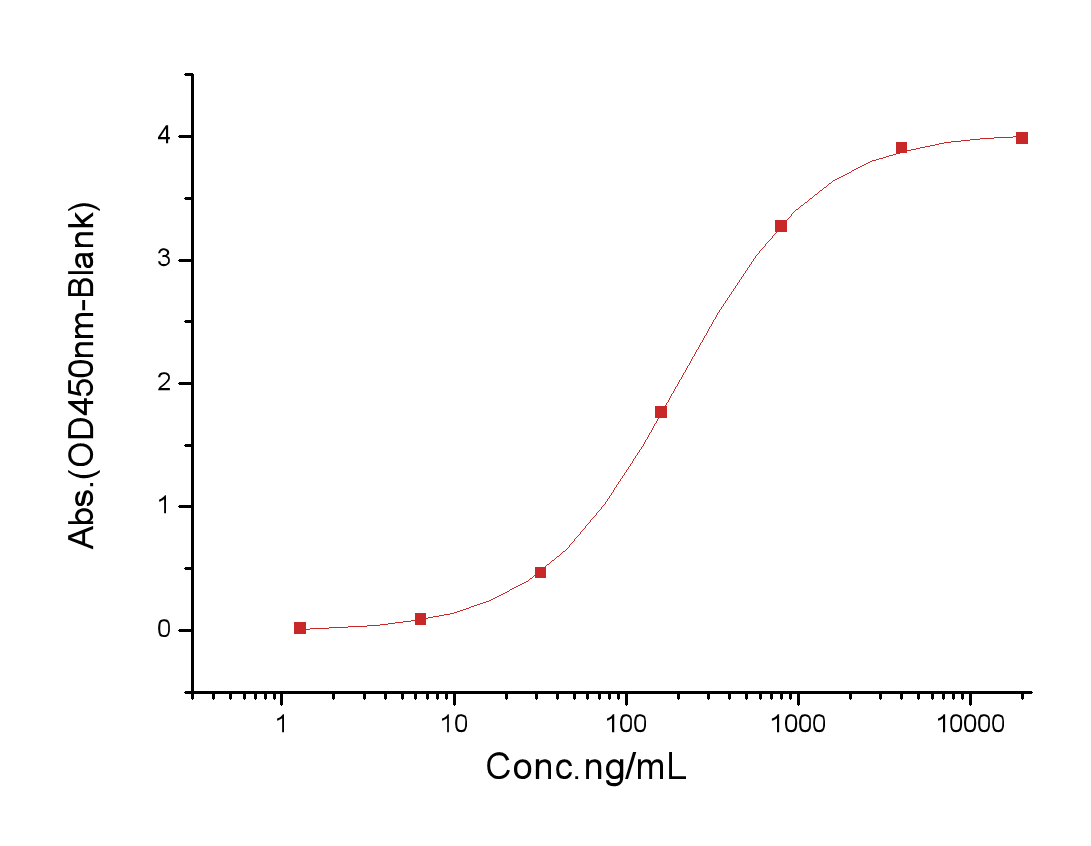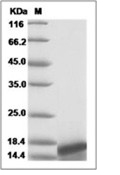- Remove All
 Your shopping cart is currently empty
Your shopping cart is currently empty
Neurotrophin 3 Protein, Human, Recombinant
NTF3 (Neurotrophin 3) is a Protein Coding gene. The protein encoded by this gene is a member of the neurotrophin family, that controls the survival and differentiation of mammalian neurons. This protein is closely related to both nerve growth factor and brain-derived neurotrophic factor. NTF3 is a key mediator of neuronal development during the early neurogenic period. NTF3 is a novel target gene of POU3F2 and that the POU3F2/NTF3 pathway plays a role in the process of neuronal differentiation. NTF3 is capable of activating TrkB to induce anoikis resistance, and show that NTF3 is also a direct target of miR-200c. NTF3 is broadly expressed in the ovary, spleen, and other tissues. Diseases associated with NTF3 include Hypochondriasis and Demyelinating Disease.

Neurotrophin 3 Protein, Human, Recombinant
| Pack Size | Price | Availability | Quantity |
|---|---|---|---|
| 20 μg | $177 | In Stock | |
| 100 μg | $397 | 7-10 days | |
| 200 μg | $679 | 7-10 days | |
| 500 μg | $2,140 | 7-10 days |
Product Information
| Biological Activity | Measured by its binding ability in a functional ELISA. Immobilized human NT3 at 2 μg/ml (100 μl/well) can bind human TrkB-Fch . The EC50 of human TrkB-Fch is 120-350 ng/mL.  |
| Description | NTF3 (Neurotrophin 3) is a Protein Coding gene. The protein encoded by this gene is a member of the neurotrophin family, that controls the survival and differentiation of mammalian neurons. This protein is closely related to both nerve growth factor and brain-derived neurotrophic factor. NTF3 is a key mediator of neuronal development during the early neurogenic period. NTF3 is a novel target gene of POU3F2 and that the POU3F2/NTF3 pathway plays a role in the process of neuronal differentiation. NTF3 is capable of activating TrkB to induce anoikis resistance, and show that NTF3 is also a direct target of miR-200c. NTF3 is broadly expressed in the ovary, spleen, and other tissues. Diseases associated with NTF3 include Hypochondriasis and Demyelinating Disease. |
| Species | Human |
| Expression System | E. coli |
| Tag | Tag Free |
| Accession Number | P20783-1 |
| Synonyms | NT-3,NT3,NGF-2,NGF2,neurotrophin 3,HDNF |
| Construction | A DNA sequence encoding the human NT3 (P20783-1) (Tyr139-Thr257) was expressed and purified. Predicted N terminal: Met |
| Protein Purity | > 90 % as determined by SDS-PAGE  |
| Molecular Weight | 13.8 kDa (predicted); 16 kDa (reducing conditions) |
| Endotoxin | Please contact us for more information. |
| Formulation | Lyophilized from a solution filtered through a 0.22 μm filter, containing PBS, pH 5. 2. Typically, a mixture containing 5% to 8% trehalose, mannitol, and 0.01% Tween 80 is incorporated as a protective agent before lyophilization. |
| Reconstitution | A Certificate of Analysis (CoA) containing reconstitution instructions is included with the products. Please refer to the CoA for detailed information. |
| Stability & Storage | It is recommended to store recombinant proteins at -20°C to -80°C for future use. Lyophilized powders can be stably stored for over 12 months, while liquid products can be stored for 6-12 months at -80°C. For reconstituted protein solutions, the solution can be stored at -20°C to -80°C for at least 3 months. Please avoid multiple freeze-thaw cycles and store products in aliquots. |
| Shipping | In general, Lyophilized powders are shipping with blue ice. |
| Research Background | NTF3 (Neurotrophin 3) is a Protein Coding gene. The protein encoded by this gene is a member of the neurotrophin family, that controls the survival and differentiation of mammalian neurons. This protein is closely related to both nerve growth factor and brain-derived neurotrophic factor. NTF3 is a key mediator of neuronal development during the early neurogenic period. NTF3 is a novel target gene of POU3F2 and that the POU3F2/NTF3 pathway plays a role in the process of neuronal differentiation. NTF3 is capable of activating TrkB to induce anoikis resistance, and show that NTF3 is also a direct target of miR-200c. NTF3 is broadly expressed in the ovary, spleen, and other tissues. Diseases associated with NTF3 include Hypochondriasis and Demyelinating Disease. |
Dose Conversion
Calculator
Tech Support

Copyright © 2015-2025 TargetMol Chemicals Inc. All Rights Reserved.


